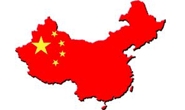Trade Cases

Leibowitz on Trade: USTR Proposes More Tariffs on China
Written by Tim Triplett
July 12, 2018
Lewis Leibowitz, trade attorney and contributor to Steel Market Update, offers the following commentary on the latest developments in Washington:
In a sharp escalation of the trade war with China, the U.S. Trade Representative has released a list of about 5,000 items valued at around $200 billion that could be subject to new 10 percent tariffs on Chinese imports if adopted after a public hearing next month. The USTR issued the list on Tuesday at the direction of President Trump.
Following are the products that could be affected. The list includes exceptions that appear strategic in nature to avoid consumer injury and annoyance (such as tariffs on pharmaceuticals and aircraft) and to avoid Chinese retaliation (on pharmaceuticals and aircraft).
The list includes tariffs on metal products from Chapters 71, 72 and 73. The new list targets precious metals (gold, platinum, silver), iron and steel waste and scrap, steel shapes and other advanced products made of iron and steel, aluminum tanks, powders and other products. Classified in Chapter 73, “articles of steel,” are products such as steel circles, steel netting and fencing, and other equipment made principally of iron or steel (heading 7326) that were not targeted before. A large number of aluminum products classified in Chapter 76 are included, as are selected products in all HTSUS Chapters covering metals (Chapters 71-83).
Also potentially subject to the new tariffs are agricultural products in Chapters 1-24, with a few exceptions: no items in Chapter 1 (live animals), Chapter 6 (live plants), Chapter 9 (coffee and tea), Chapter 13 (gums and resins) or Chapter 18 (cocoa).
Other chapters with no items include Chapter 30 (pharmaceuticals), Chapter 49 (books), Chapters 61-64 (apparel and footwear), Chapter 66 (umbrellas), and Chapters 92-93 (musical instruments, arms and ammunition). Only one item, parachutes, is included from Chapter 88. All other chapters have at least two items.
The list of proposed tariffs is subject to public comment. The due date for filing requests to appear and a summary of expected testimony at the public hearing, and for filing pre-hearing submissions, is July 27. The due date for submission of written comments is Aug. 17.
The Section 301 Committee will convene a public hearing in the main hearing room of the U.S. International Trade Commission, 500 E Street SW, Washington, D.C., beginning at 9:30 a.m. on Aug. 20-23. The due date for submission of post-hearing rebuttal comments is Aug. 30.
More lists could be forthcoming. In 2017, imports of goods from China totaled $505 billion. With the new $200 billion list, the total trade affected by Section 301 tariffs would be about $250 billion, or half the imports from China. The Section 232 tariffs affect another $3 billion or so from China.
The other half of U.S. trade with China, which so far has been unaffected, could also be included. If pharmaceuticals and aircraft are hit with tariffs, China would likely retaliate on those products, affecting some of the largest exporters in the United States.
Another possibility is an increase in the size of the tariff. The 10 percent tariff rate could be increased. Ten percent tariffs will not stop trade in most products, but will be an annoyance to businesses and consumers. Higher tariffs could seriously constrain trade volumes.
And the end is not in sight. The avowed purpose of the Section 301 tariffs is to change China’s behavior in trade—intellectual property theft, technology transfer, investment restrictions and the like. As the notice makes clear, China’s behavior has not changed, prompting the additional $200 billion list. If the new tariffs do not effect a change in China’s behavior or negotiations, there will be other restrictions.
U.S. exports to China in 2017 totaled about $129 billion. With the publication of the $200 billion list, USTR has escalated the fight. China cannot retaliate on $200 billion in U.S. exports because U.S. exports to China are not that high. Therefore, China will look for other ways to retaliate, spreading the trade war to other sectors (such as services) or non-tariff areas and possibly non-trade areas.
Lewis Leibowitz
The Law Office of Lewis E. Leibowitz
1400 16th Street, N.W.
Suite 350
Washington, D.C. 20036
Phone: (202) 776-1142
Fax: (202) 861-2924
Cell: (202) 250-1551

Tim Triplett
Read more from Tim TriplettLatest in Trade Cases

Canada moves to curb steel imports with TRQs
Canada has implemented tariff-rate quotas (TRQs) on steel imports to help stabilize its domestic market.

Commerce launches probe into unfairly traded rebar imports
Here are the details and a case timeline for the rebar trade case recently initiated by the Commerce Department.

Leibowitz on Trade: Who is winning the tariff debate?
Most economists will tell you that universal tariffs will result in inflation and reduce demand, causing a recession or worse. (After all, this is what happened in the 1930s). It is a rare product that is so essential that demand will not go down if prices go up.

Canadian steel industry fears thousands of job losses from US tariffs
The Canadian steel industry is bracing for thousands of job losses because of US tariffs, the Canadian Steel Producers Association says.

US, Mexico mull tariff-rate quota system: Report
Could the US and Mexico end up with a tariff-rate quota system?
